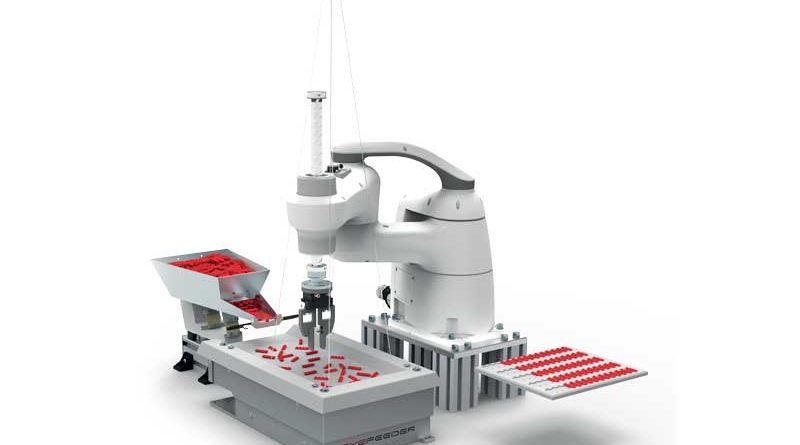Intelligent and Flexible Feeding
Designed for being used with the Denso range of 4- or 6-axis robots, Eyefeeder® is an advanced feeding system that ensures production efficiency through extremely fast set-up and seamless integration with the vision system. At Automatica we met Rob Vuurmans from ROBA Engineering, the Dutch company that developed the system, and talked with him about features and possible applications.
Pick & place, quality control, assembly, machine tools tending, packaging, cosmetics, medical equipment. These are just some of the possible fields of application for the Eyefeeder®, the intelligent and flexible feeder developed by the Dutch company ROBA Engineering and specifically designed for use with the Denso range of robots.
Flexibility and fast format changeover – one of the main features of the Eyefeeder – make the system particularly suitable for processing small batches.
“Specifically designed for flexible part feeding – from metal and plastic components to medical components, springs and so on – the Eyefeeder range includes several models: with a tray for smaller parts (Mini-Eyefeeder) and a belt for bigger parts”, explains Rob Vuurmans from ROBA Engineering. “The system provides infrared lighting from below, with a special filter on the lens: a fast and reliable method indeed, as it prevents any possible interference from external lights”.
Designed to work with a broad range of robots
“One of the most important things about our system – adds Mr Vuurmans – is that it is fully integrated in the Denso controller and equipped with servomotors directly driven by the Denso robot controller itself.
This makes it possible to use the Eyefeeder without an additional controller (PLC or PCI) or operating panel (HMI). Setup is then very fast: users only have to insert the parameters that indicate how fast and in which way the Eyefeeder has to shake, depending on the product to be processed”. The Eyefeeder is designed to work with a broad range of Denso SCARA as well as six-axis robots, with payload from 3 to 20 kg
and reach from 350 to 1.300 mm.
How the whole system works
The whole system is made of three key elements: the Eyefeeder, the robot with its controller and the camera. When products are dispensed on the belt of the Eyefeeder, it forwards the products in the detection area of the vision system. The latter determines which action is required. If the parts are well positioned and ready to be picked, it will give coordinates to the robot, which takes the parts. If there are enough products but these are not well positioned, the vision system tells the Eyefeeder to shake/flip the products so the robot can take them. There are 3 different shake actions in both models of Eyefeeder: shaking, backwards and forward. When there are not enough or no products anymore, the vision system tells the Eyefeeder to move new products into the detection area of the vision system. “We provide the customer with several options in terms of robot, belts, motion system or vision system. It is enough for us to know which parts have to be processed and then we do a basic test about lighting, camera, belt, tray or other options. Finally, we give the customer an advice about the best solution he can choose”, concludes Mr Vuurmans.

